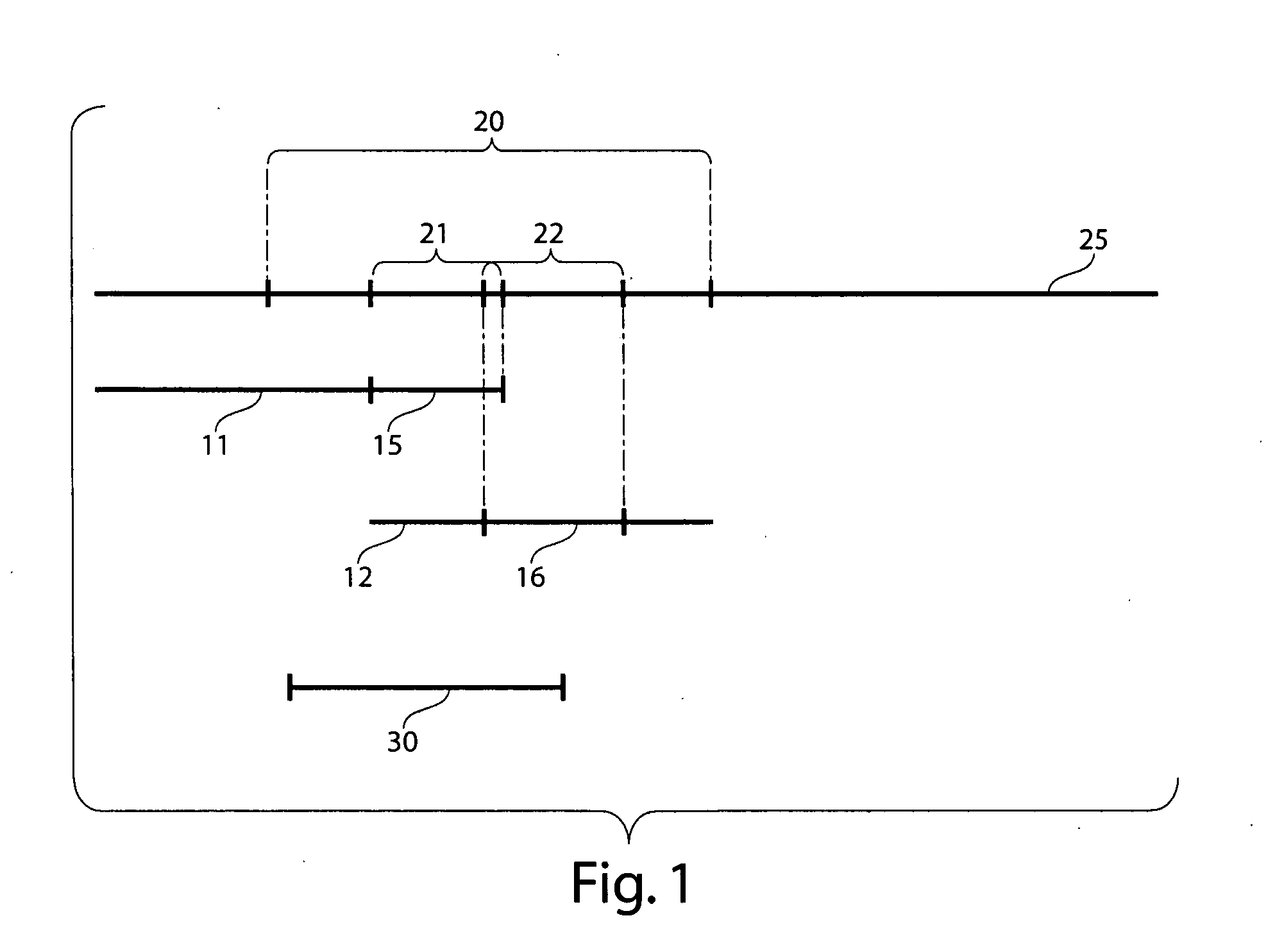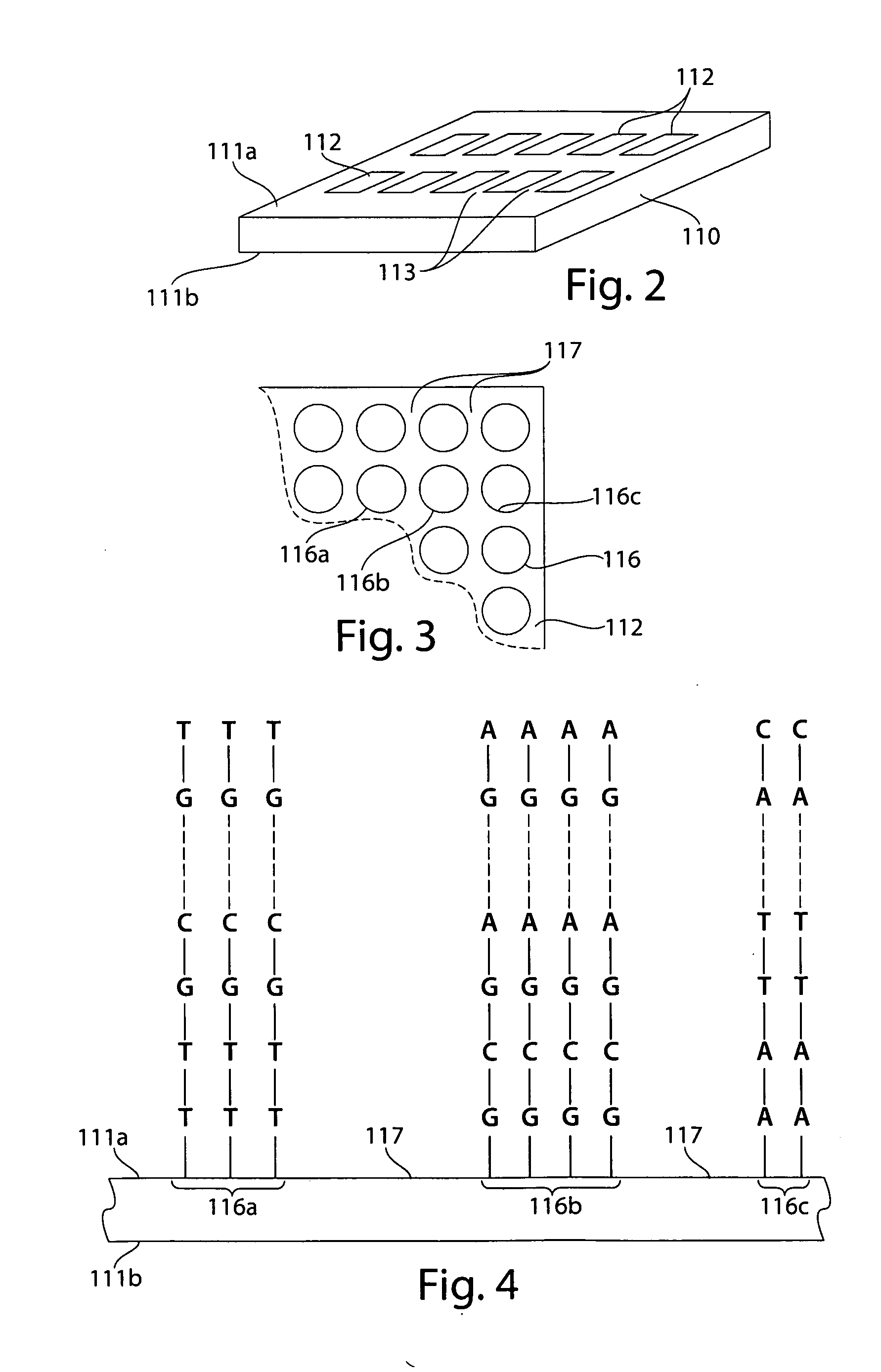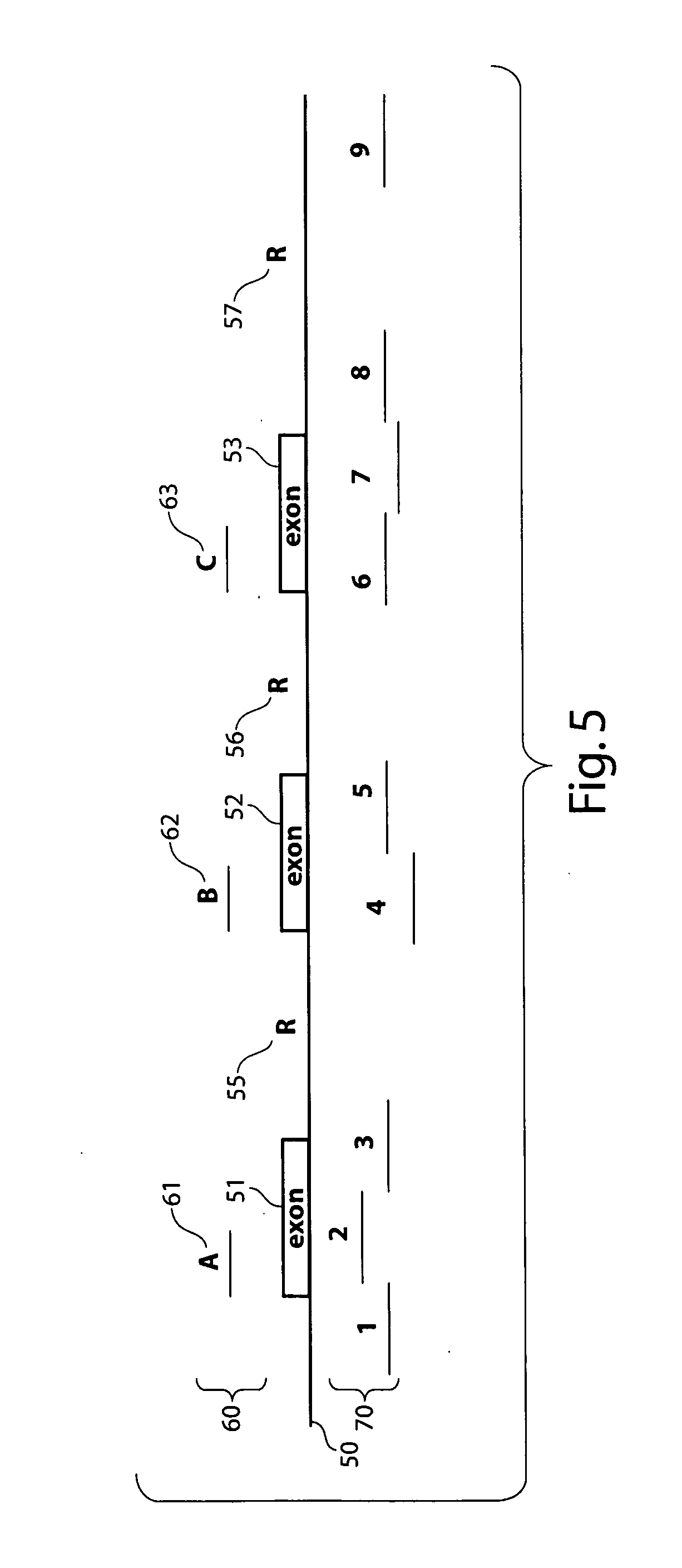Validation of comparative genomic hybridization
a genomic hybridization and comparative technology, applied in the field of comparative genomic hybridization validation, can solve the problems of perinatal genetic problems that often result from loss or gain of chromosome segments, methods still have significant limitations in their ability to detect chromosomal alterations at single gene resolution, and array features containing longer lengths of nucleic acid sequences are more susceptible to cross hybridization
- Summary
- Abstract
- Description
- Claims
- Application Information
AI Technical Summary
Benefits of technology
Problems solved by technology
Method used
Image
Examples
Embodiment Construction
[0031] DNA is a molecule that is present within all living cells. DNA encodes genetic instructions which tell the cell what to do. By “examining” the instructions, the cell can produce certain proteins or molecules, or perform various activities. DNA itself is a long, linear molecule where the genetic information is encoded using any one of four possible “bases,” or molecular units, in each position along the DNA. This is roughly analogous to “beads on a string,” where a string may have a large number of beads on it, encoding various types of information, although each bead along the string can only be of one of four different colors.
[0032] However, there are differences between each individual's DNA. In many cases, for an individual “gene” (essentially, a unit of information encoded within the DNA), the difference may be as subtle as a single base, or there may also be errors in the DNA. These errors may arise, for example, from various types of cancer.
[0033] A technique known as...
PUM
| Property | Measurement | Unit |
|---|---|---|
| temperature | aaaaa | aaaaa |
| temperature | aaaaa | aaaaa |
| temperature | aaaaa | aaaaa |
Abstract
Description
Claims
Application Information
 Login to View More
Login to View More - R&D
- Intellectual Property
- Life Sciences
- Materials
- Tech Scout
- Unparalleled Data Quality
- Higher Quality Content
- 60% Fewer Hallucinations
Browse by: Latest US Patents, China's latest patents, Technical Efficacy Thesaurus, Application Domain, Technology Topic, Popular Technical Reports.
© 2025 PatSnap. All rights reserved.Legal|Privacy policy|Modern Slavery Act Transparency Statement|Sitemap|About US| Contact US: help@patsnap.com



